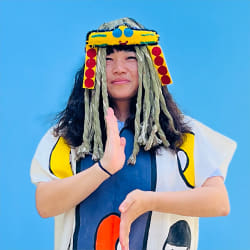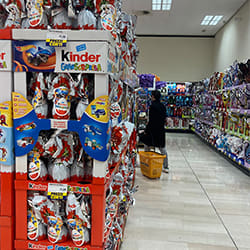In the winter season, the temperatures don’t usually go below 5°C.
The wind from the North, called tramontana, blows in the area around Genoa bringing rain and snow to the mountains surrounding the city.
In the summer, the heat is normally moderate, even if sometimes humid and sultry.
The daily temperatures go over 30°C only a few times during the season, but the humidity remains high, amplifying the perception of the heat.
Along the coast we get a nice breeze, tramontana indeed, which helps cool down the temperatures at times.
In the hinterland, the temperatures are more extreme but it rarely snows heavily for long periods of time. This has become a reality in the past few decades and the climate change has affected Liguria too. The consequence has been the permanent closure of a popular ski resort around the Beigua mountain which used to welcome local skiers during the winter.
Fog is not common along the Mediterrenean coastline and it is actually a rare phenomenon, but it does exist in Liguria too.
Ligurians are not used to fog. It happens so rarely that they don't know how to behave when they encounter it. When it happens, fishermen boats search for each other all night long using their sirens, people get confused in the alleys and don’t know where to go.
We don't even know how to call it: macaia, caligo or gaigo...
The term macaia probably has Greek origins and is the same as the caligo, but, over time, has taken on a more negative, melancholy nuance. It has become part of the local culture and literature, and local poets and songwriters have talked about it in their works, often mentioning it as a condensation and personification of the Ligurian mugugno (complaint).
I have written an entire article about the “art” of the mugugno which Liguria is famous for nationwide that is complaining all the time about just about anything.
Scientifically speaking, if we wanted to find a distinction between the macaia and the caligo, we could say that the caligo usually appears in the morning while the macaia in the evening. The latter is more frequent in the hot season, while the caligo appears in early spring, when it is still cold but it’s also very rare.
The caligo usually occurs during the spring due to the combination of very particular conditions, such as a fairly strong anticyclone, a cold sea and a weak south wind that travels just above the surface of the water and pushes the fog towards the coast.
The result is a bank of milky fog a few meters high, while from the heights one can witness the spectacle of the sea of clouds below.

Caligo effect

Macaia effect and Genoa flag
The gaigo, on the other hand, is the fog that, like a tablecloth, settles on the central-western Apennine range of the region, from West to East. It is the exact opposite phenomenon of macaia and caligo because it is caused by the north wind and by the humidity which, due to an effect called stau (air currents full of humidity which condense along the Apennine hills), causes a cloud cover with the effect of a tablecloth on the Ligurian slopes.





























































